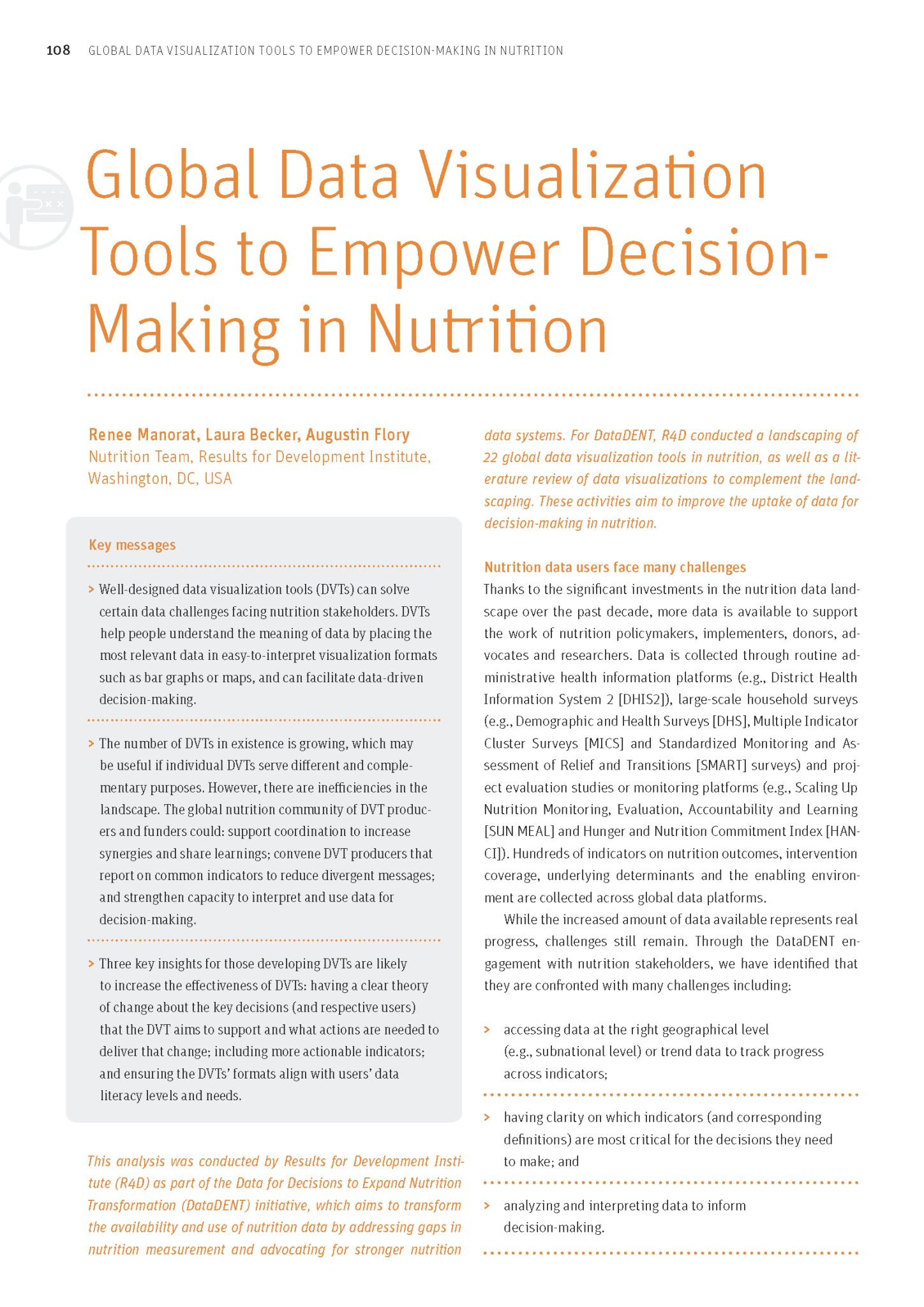Date of Publication | August 2019
Key Messages
1. Well-designed data visualization tools (DVTs) can solve certain data challenges facing nutrition stakeholders. DVTs help people understand the meaning of data by placing the most relevant data in easy-to-interpret visualization formats such as bar graphs or maps, and can facilitate data-driven decision-making.
2. The number of DVTs in existence is growing, which may be useful if individual DVTs serve different and complementary purposes. However, there are inefficiencies in the landscape. The global nutrition community of DVT producers and funders could: support coordination to increase synergies and share learnings; convene DVT producers that report on common indicators to reduce divergent messages; and strengthen capacity to interpret and use data for decision-making.
3. Three key insights for those developing DVTs are likely to increase the effectiveness of DVTs: having a clear theory of change about the key decisions (and respective users) that the DVT aims to support and what actions are needed to deliver that change; including more actionable indicators; and ensuring the DVTs’ formats align with users’ data literacy levels and needs.

